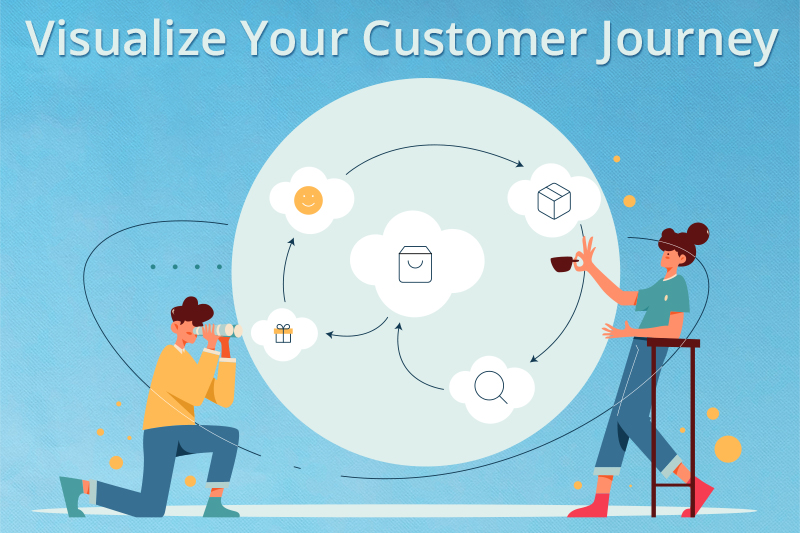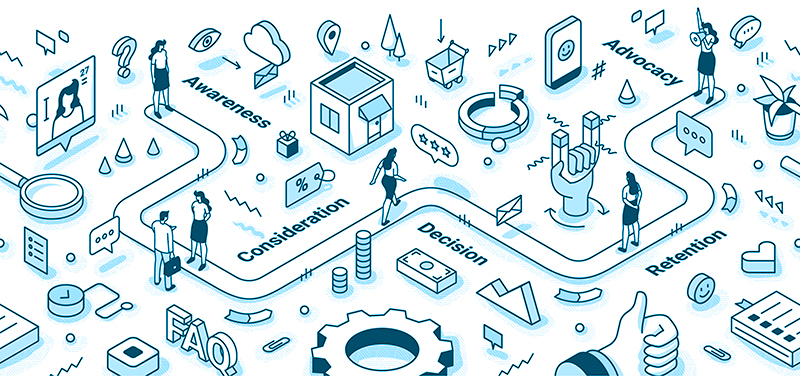When digital marketing hit the scene with the birth of the internet in the 1990s, many sales teams and business leaders pushed against the idea. They either didn’t want to implement digital marketing efforts or they didn’t know how to.
Even today, there’s often a disconnect between sales and marketing departments – and we want to help.
Your digital marketing department is not at war with your sales team. Instead, the marketing department is trying to help your sales team do their jobs with less stress, more leads, and an easier workflow.
In this article, we’ll go over how you can modernize your sales cycle with digital marketing.
The Key: Integrate Sales and Marketing
The key to modernizing your B2B sales cycle is integration. Integrating your digital marketing efforts and sales efforts means cross-department collaboration.
Teamwork is necessary to modernize your sales cycle. Without this in place, your team members will likely start to go their separate ways, revert to old habits, and you’ll waste a lot of time and money trying to get back on track.
With collaboration at the forefront of this initiative, it’s important to understand that changing processes take time. Old habits die hard. Whether you only have a sales team and need a marketing team, or you have both teams in place and they just aren’t working together, we recommend the following proven process.
5 Steps to Modernizing Your Sales Cycle
- Get executive buy-in
- Swap out the traditional sales cycle for the customer journey
- Train sellers on the customer journey
- Train marketers on the customer journey
- Collaborate and optimize
Get Executive Buy-In
If you have a medium- to large-sized business, you will need to get executive buy-in before you can move forward.
Without getting executive buy-in first, you risk having team members fall into old habits without any guidance to get back on track – making your job even harder.
If you are the one in charge, then it’s important that you move into this initiative with a long-term mindset. This process takes time and you may have employees that resist the change, but in the end, your business should be able to grow faster while lowering your employees’ stress.
Swap Out the Traditional Sales Cycle for the Customer Journey
After you get executive buy-in, it’s time to restructure your sales cycle. You see, your sales cycle is all about your bottom line and your sales team. It’s about meeting quotas and providing pushy pitches.
The traditional sales cycle looks like this:
- Sales prospecting
- Making contact
- Qualifying the lead
- Nurturing the lead
- Making an offer
- Handling objections
- Closing the sale
Notice how this cycle is sales-focused?
But modern sales is all about the customer. What questions do they have? Are they ready to buy now or just browsing? How can we educate them? (Does this sounds like digital marketing yet? It should.)
Since the customer’s needs have changed, the sales cycle must change, too.
Enter the customer journey.
The customer journey turns the traditional sales cycle on its head by being customer-centric. The journey outlines what customers experience between having a need and finding a solution with your products or services.
With the customer journey in mind, your sales and marketing teams can reach prospects where they are in the customer journey. This process better serves prospects, which also helps your bottom line. (And reduces the amount of cold calling your sales team has to do.)
Tip: Your customer journey might change over time, so consider it a draft.
Train Sellers on the Customer Journey
Once you know what the customer journey is, it’s time to train your sales team on the customer journey. Work with them to figure out what processes they will continue to implement themselves, and what processes can be delegated to the marketing team.
Tip: If it can be automated, delegate it to the marketing team. If the task includes one-on-one communication, keep it with the sales team.
The goal of this training process is to show your sales team how the marketing department can benefit them before the marketing department starts to make changes. If you have long-time traditional sellers on your team, this step is critical to your success.
Train Marketers on the Customer Journey
Once you get seller buy-in, it’s time to delegate those tasks determined in the last step to the marketing team.
Your marketing team already knows the ins and outs of how to run successful campaigns, so it’s your job to train them on the new customer journey. Make sure they understand the value of the sales team while also encouraging them to streamline processes, develop more customer touchpoints, and build an effective funnel for the sales team.
Collaborate and Optimize
Customer needs are always changing, which is why it’s important for your sales and marketing teams to continually collaborate and optimize their processes.
When both teams keep a finger on the pulse of your customer’s needs, you will be able to identify opportunities for new service or product offerings as well as time sales and promotions appropriately.
Don’t Modernize Your Sales Cycle Alone
Do you need help modernizing your sales cycle? SharedTEAMS can help.
We’ve worked with B2B businesses large and small to implement digital marketing efforts into their sales processes at varying speeds. We’ve helped businesses grow while relieving their sales teams of stress by building effective marketing funnels that reach and nurture your prospects.
Let your sales team focus on what they do best without stressing about where to get leads or missing a follow-up opportunity. Learn how our membership-based shared marketing department works here.






